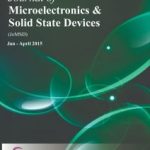
Sayyadanand Sarfaraj Patel,

Pooja Santosh Mahamuni,

Kiran Prakash Jujare,

Deepak Sampat Khaladkar,

Rohit Sandip Birdawade,

Sanjay Bapuso Patil,
- Student Department of Electronics and Telecommunication, Rajgad Dnyanpeeth’s SCSCOE, Pune Maharashtra India
- Student Department of Electronics and Telecommunication, Rajgad Dnyanpeeth’s SCSCOE, Pune Maharashtra India
- Student Department of Electronics and Telecommunication, Rajgad Dnyanpeeth’s SCSCOE, Pune Maharashtra India
- Student Department of Electronics and Telecommunication, Rajgad Dnyanpeeth’s SCSCOE, Pune Maharashtra India
- Student Department of Electronics and Telecommunication, Rajgad Dnyanpeeth’s SCSCOE, Pune Maharashtra India
- Principal Department of Electronics and Telecommunication, Rajgad Dnyanpeeth’s SCSCOE, Pune Maharashtra India
Abstract
This article offers a detailed explanation of the process for creating an innovative electronic voting system that utilizes the flexibility and efficiency of the Raspberry Pi. This method aims to improve voting security, transparency, and user-friendliness by employing digital technology and a mechanism called the Voter Verified Paper Audit Trail (VVPAT). The proposed system comprises several components, including a Raspberry Pi for control, candidate selection buttons, a camera for voter verification, red LEDs to indicate selected candidates, a 16×2 LCD for displaying the current state, and a buzzer to provide feedback to voters regarding their success. Individuals choose candidates by activating a GPIO button connected to a Raspberry Pi device. Following the casting process, every vote undergoes thorough verification using red LEDs that simulate the corresponding button presses. Implementing the Voter-Verified Paper Audit Trail (VVPAT) method is an excellent approach to address the challenges associated with digital tampering. This approach guarantees transparency and precision by producing a tangible vote record, facilitating future audits and verification. The camera can detect fraud using facial recognition or QR code verification when linked via USB. The 16×2 LCD screen displays confirmation messages, voting instructions, and feedback when voters cast their ballots. As an added convenience and to make voting more transparent, the system alerts the user by sounding a bell when a vote is successful. Thus, the voter receives immediate audio confirmation. This article discusses the design and integration of future voting systems, emphasizing creating secure, transparent, and efficient systems. After thorough evaluation and testing, the proposed solution has been proven to significantly improve the voting experience while maintaining the integrity of elections.
Keywords: Electronic Voting System, Voter Verified Paper Audit Trail (VVPAT), Digital Technology, Transparent Electoral Processes, Secure Voting
References
- “Voting After Florida: No Easy Answers,” Lorrie Faith Cranor, December 2000, http://lorrie.cranor.org/.
- “Electronic Voting,” Encyclopedia of Computers and Computer History, prepared by Lorrie Faith Cranor and edited by Raul Rojas, published by Fitzroy Dearborn, 2001.
- “Voting – What is, What Could be,” Caltech/MIT Voting Technology Project (VTP) Report, July 2001.
- “A Modular Voting Architecture (“Frogs”),” Shuki Bruck, David Jefferson, and Ronald L. Rivest, August 2001.
- “Comments of Professor Ronald L. Rivest,” Caltech/MIT VTP Press Conference, July 16, 2001, http://theory.lcs.mit.edu/~rivest/publications.html.
- “Testimony was given before the US House Committee on Administration,” Ronald L. Rivest, May 24, 2001, http://theory.lcs.mit.edu/~rivest/publications.html.
- “Electronic Voting,” Ronald L. Rivest, Technical Report, Laboratory for Computer Science, Massachusetts Institute of Technology.
- “Report of the National Workshop on Internet Voting: Issues and Research Agendas,” Internet Policy Institute, sponsored by the National Science Foundation, Conducted in cooperation with the University of Maryland and hosted by the Freedom Forum, March 2001.
- “A Report on the Feasibility of Internet Voting,” California Internet Voting Task Force, January 2000.
- “Appendix A: Technical Committee Recommendations,” California Internet Voting Task Force, January 2000.
- “e-Voting Security Study,” E-Democracy Consultation, U. K. Cabinet Office, http://www.edemocracy.gov.uk/library/papers/study.pdf.
- “A Practical Secret Voting Scheme for Large Scale Elections,” A. Fujioka, T. Okamoto, and K. Ohta, Advances in Cryptology – AUSCRYPT ’92.
- “Sensus: A Security-Conscious Electronic Polling System for the Internet,” Lorrie F. Cranor and Ron K. Cytron, Proceedings of the Hawai’i International Conference on System Sciences, January 7-10, 1997, Wailea, Hawai’i, USA.
- “Secure Electronic Voting Over the World Wide Web,” Master’s Thesis, Department of Electrical Engineering and Computer Science, Massachusetts Institute of Technology, May 1999.
- “Multiple Administrators for Electronic Voting,” Bachelor’s Thesis, Department of Electrical Engineering and Computer Science, Massachusetts Institute of Technology, May 1999.
- “An Untraceable, Universally Verifiable Voting Scheme,” Professor Philip Klein, Seminar in Cryptology, December 12, 1995.
- http://www.e-poll-project.net/
- http://www.free-project.org/
- “Secure Voting Using Disconnected, Distributed Polling Devices,” David Clausen, Daryl Puryear, and Adrian Rodriguez, Department of Computer Science, Stanford University.
- “Security Criteria for Electronic Voting,” Peter G. Neumann, 16th National Computer Security Conference, Baltimore, Maryland, September 20-23, 1993.
- “Security Considerations for Remote Electronic Voting,” Aviel D. Rubin, Communications of the ACM, Vol. 45, No. 12, December 2002.
- Maminul Islam, Md. Sharif Uddin Azad, Md. Asfaqul Alam, Nazmul Hassan, “Raspberry Pi and image processing based Electronic Voting Machine (EVM),” 2014 International Journal of Scientific & Engineering Research, Volume 5, Issue 1, pp. 1506- 1510, January 2014.
- Keerthana, P. Priyanka, K. Alise Jenifer, R. Rajadharashini, Aruna Devi. P, “Impressive Smart Card Based Electronic Voting System”, 2015 IJRET: International Journal of Research in Engineering and Technology, Volume 4, Issue 3, pp. 284-288, March 2015.
- Shekhar Mishra, Y. Roja Peter, Zaheed Ahmed Khan, M. Renuka, Abdul Wasay, S.V. Altaf, “Electronic Voting Machine using Biometric Finger Print with Aadhar Card Authentication,” 2017 International Journal of Engineering Science and Computing, Volume 7, Issue 3, pp. 5897-5899, March-2017
- Gowtham R, Harsha K N, Manjunatha B, Girish H S, Nithya Kumari R, “Smart Voting System,” 2019 International Journal of Engineering Research & Technology (IJERT), Volume 8 Issue 4, pp. 294-296, April-2019.
- Ganesh Prabhu S., Nizarahammed A., Prabu.S, Raghul S., R. R. Thirrunavukkarasu, P. Jayarajan, “Smart Online Voting System,” 2021 7th International Conference on Advanced Computing and Communication Systems (ICACCS), pp. 632-643, 2021.

Journal of Microelectronics and Solid State Devices
| Volume | |
| Received | July 1, 2024 |
| Accepted | July 16, 2024 |
| Published | July 28, 2024 |

